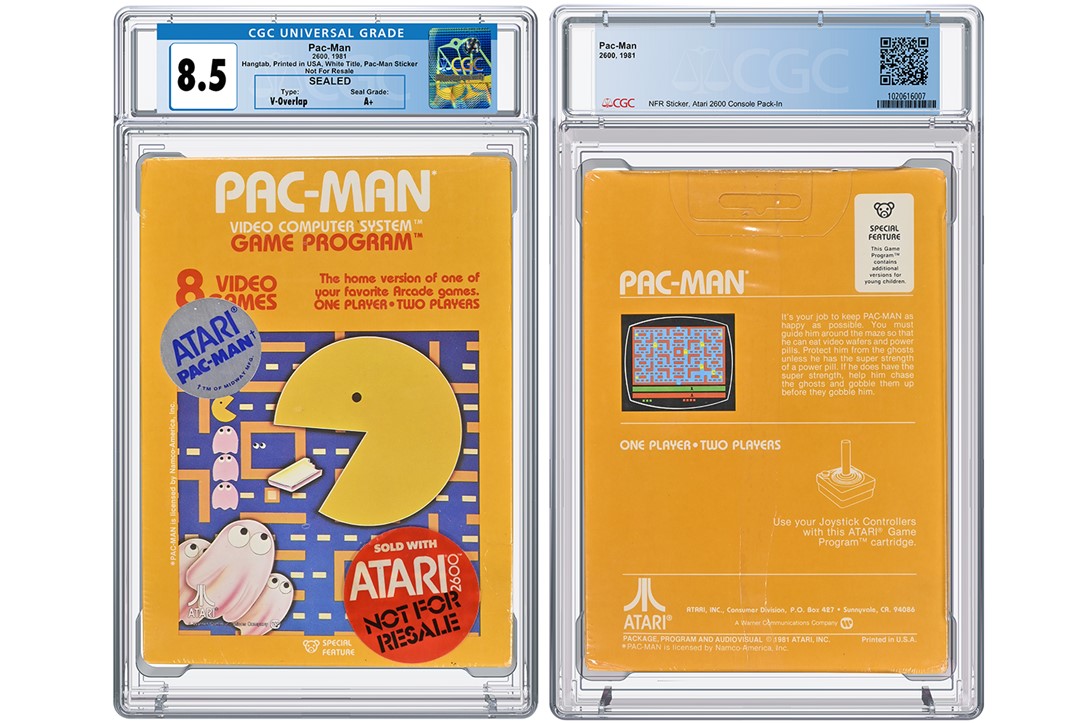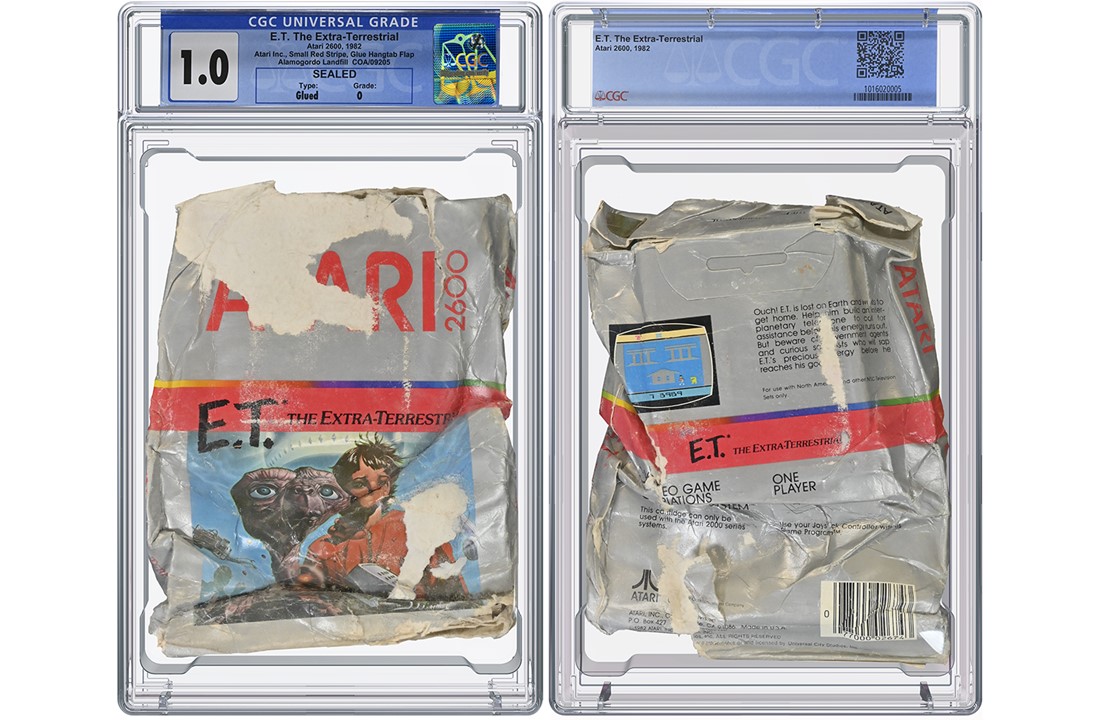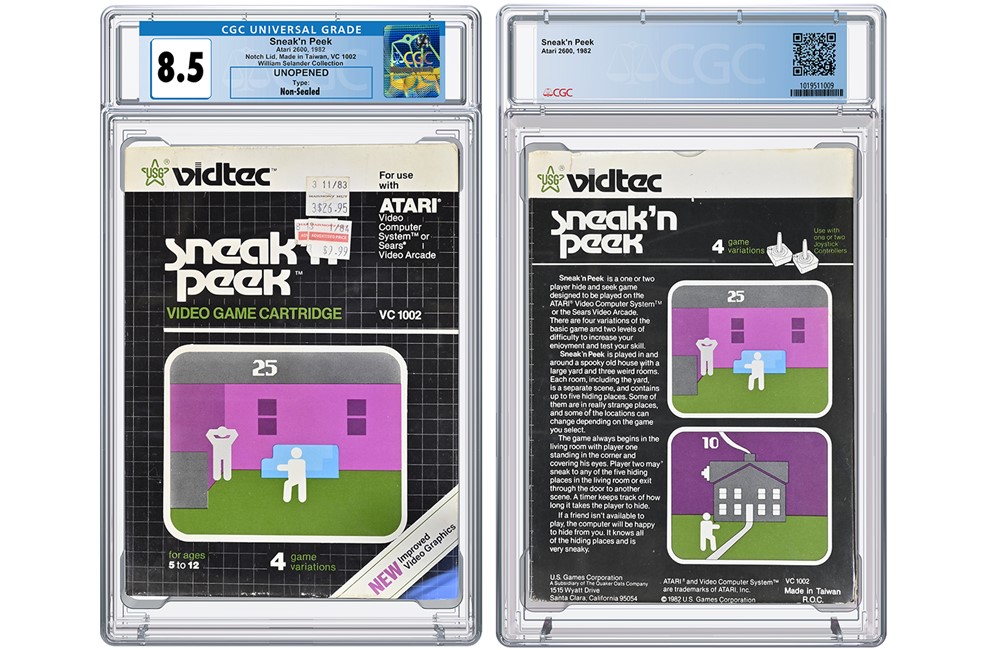The Great Video Game Crash of 1983 - Part 1

Video games have become a staple form of entertainment for consumers across the world. Advances in computing and other technologies paved the way for the industry’s growth, but it wasn’t always smooth sailing. Oversaturation of the market with poor-quality games brought the North American side of the industry to its knees in an event that would come to be known as the Video Game Crash of 1983.
The Rise of Home Consoles
In 1967, Ralph H. Baer — a war veteran and engineer — began tinkering with the possibility of playing games on a television screen. With the support of his employers, he began to build a prototype for a console that could simulate a game of ping pong on a TV screen, controlled by two players. The console itself was wrapped in brown tape to make it look like it was made with wood veneer — appropriately, the prototype was named “The Brown Box.” Baer and his team spent several years working on the prototype and officially finished it in 1971.
After completing his prototype, Baer tried to find a buyer to purchase and license his new console. Just months after completing The Brown Box, Magnavox — an American electronics brand — purchased the technology and re-released it as the Magnavox Odyssey. Released in 1972 in North America, the Odyssey was a very simple console that used just three square dots and a vertical line to convey gameplay — for example, in Table Tennis, players would control two of the three square dots as rackets, while the vertical line was moved to the middle of the screen to symbolize a net. The Odyssey was also the first game console to introduce a peripheral light gun controller, which was designed by Nintendo.
Although the Magnavox Odyssey was not considered a commercial success, it was integral in showing off the potential of what video game consoles could be. The console’s popularity caused an increased demand for similar entertainment, leading other developers to create clone consoles or start their own developments. Atari’s flagship arcade game, Pong, was based on the electronic ping-pong game included on the Odyssey. Despite Magnavox later suing Atari for patent infringement, Pong became extremely popular and earned the title of the first commercially successful video game.
The introduction of the Atari 2600 in 1977 (known then as the Atari VCS) was the pivotal event that brought the video game industry from niche to mainstream. The console popularized the use of microprocessor-based hardware and used swappable ROM cartridges to offer consumers a variety of games, which included ports of popular arcade hits, including Space Invaders, Asteroids and Pac-Man.
 |
By 1982, the Atari 2600 had become the dominant game system in North America. The ability to play video games at home instead of at arcades appealed to families and more hardcore gaming enthusiasts, which other companies took note of. The increased demand sent the video game industry into overdrive and maximized its popularity, leading to a period of massive growth throughout the 1970s and early 1980s.
So What Happened?
There were many events leading up to the Crash of 1983, including an oversaturation of video game consoles in the market, poor decision-making that led to mediocre game development and the rising popularity of personal computers in homes. Together, all these factors contributed to one of the largest video game market crashes in North American history.
Market Oversaturation
The Atari 2600 was a ground-breaking console that sent the video game industry into a frenzy of growth. Everyone wanted a piece of the pie, which caused several tech companies to begin releasing their own consoles and video games on the market. From the late 1970s to the early 1980s, iconic consoles such as the Intellivision, ColecoVision, Magnavox Odyssey 2, Vectrex and Atari 5200 entered the market, each with its own library of games. Some of these consoles — such as the ColecoVision — even produced peripherals that allowed Atari games to be played on their console for versatility.
Unfortunately, having so many consoles available at the same time caused overproduction issues. Developers — Atari especially — vastly overestimated the demand for video game consoles between 1982 to 1983. They made far too many units, resulting in hundreds of thousands going unsold, returned and even discarded. What’s more, each console had its own library of games — many of which were also discarded along with the consoles.
Poor-quality Games
The Atari 2600 also had its own library of games, as well as many third-party developer titles (a brand-new concept at the time, starting with the founding of Activision by four former Atari programmers). Activision and Atari’s success pushed other competitors to enter the video game market, many with backgrounds ranging anywhere from technology to sales.
When Baer decided to license the Brown Box as a commercial venture, he understood that the games included with it had to be enjoyable, or investors and consumers wouldn’t be interested. Unfortunately, many of these new competitors were more interested in profit than good game design, which led to the release of many shabby games and even some blatant knockoffs of successful classics.
 |
One of the most famous examples of a poor-quality game was E.T. The Extra-Terrestrial. Seeking to capitalize on the recently released film’s massive popularity, Atari Inc. decided to produce a game for their flagship system, hoping it would realize massive profits. E.T. The Extra-Terrestrial was doomed from the start — the game was developed entirely by one person (Howard Scott Warshaw), who was given little direction on how to build the game other than making it an “innovative adaptation.” What’s more, Warshaw had only five weeks to develop the game in time for the 1982 Christmas season.
The game was poorly received. Out of the 2.6 million copies sold by the end of 1982, more than 25% of them were returned in 1983. Additionally, Atari ordered a massive surplus of cartridges that later went unsold or returned. These unsold copies were later buried in a landfill in New Mexico. (For more information on the Atari game and a CGC-certified example recovered from the landfill, go here.)
Other Atari games were later criticized for being awful ports of arcade games, including examples such as Atari’s port of Pac-Man. The industry was also plagued with oddball or unlicensed games — one particularly wacky example included Sneak’n Peek, a hide-and-seek video game developed by none other than Quaker Oats, who purchased U.S. Games (Sneak’n Peek’s developer) to compete with General Mills’ Parker Bros. division. U.S. Games and Quaker Oats produced 13 other games for the Atari 2600 — all released in 1982 — before shutting down operations just one year later in 1983.
 |
Of course, E.T. The Extra-Terrestrial and Quaker Oats' games weren’t the only “bad games” that contributed to market oversaturation and the eventual crash of 1983. Part of the issue was the lack of licensing laws and rights at the time, meaning that developers could create and release games for gaming platforms without permission. This led to many developers releasing buggy “shovelware” that was unenjoyable and nearly unplayable.
The Rise of Personal Computers
The final nail in the coffin was the unexpected competition from personal computers — something Atari and other video game giants hadn’t accounted for. Home computers had achieved a level of affordability as far back as 1977, and they became increasingly popular as they became more accessible to the average American family.
Not only could the computer play video games just as well as an Atari or Intellivision, but it could also be used for word processing, home accounting and other important tasks. Games were also easier to distribute on home computers in the form of floppy disks or cassette tapes instead of ROM cartridges, and these mediums also allowed players to save their progress; a feature that was unavailable on consoles at the time.
In 1982, Commodore International introduced the Commodore 64 (C64) – an 8-bit home computer that was inexpensive, accessible and could easily play video games. Within months, the C64 dominated the low-end computer market, immediately outselling not only video game consoles, but also the other home computers on the market at the time.
All these factors combined to create one of the worst financial drops for the video game industry in history. By the beginning of 1983, the entire industry went through a catastrophic shakeout that changed it forever, causing long-term effects that are still felt to this day.
Stay tuned for the conclusion of this two-part article, coming in December 2025.